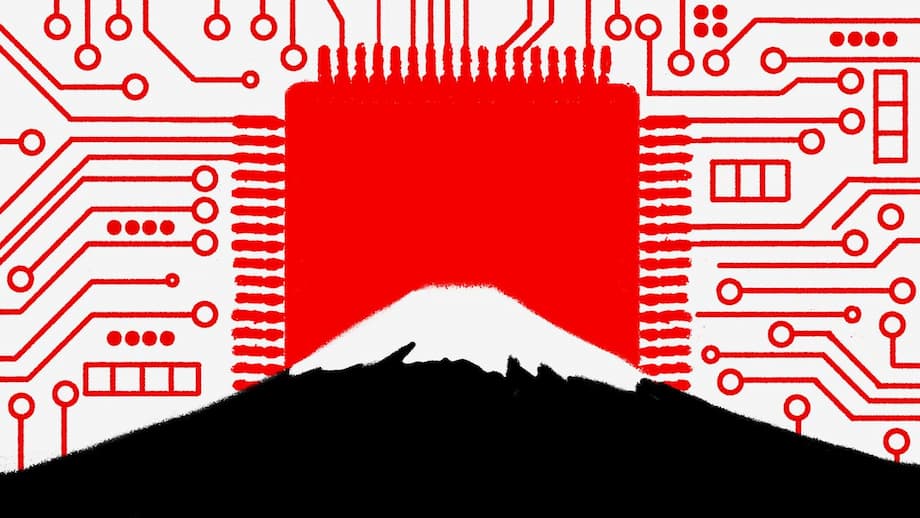Japan’s Bold Bid to Reclaim Semiconductor Leadership
In the windswept city of Chitose on Japan’s northernmost island, a new chapter in the nation’s industrial history is unfolding at breakneck speed. Rapidus, a state-backed semiconductor startup founded in 2022, has stunned the global tech community by piloting the production of two-nanometer (2nm) transistors—some of the world’s most advanced chips—within just three years of its inception. This remarkable feat, led by the energetic 73-year-old engineer Koike Atsuyoshi, signals Japan’s determination to claw back relevance in a sector it once dominated but lost to rivals in Taiwan, South Korea, and the United States.
- Japan’s Bold Bid to Reclaim Semiconductor Leadership
- From Global Dominance to Decline: How Japan Lost Its Edge
- Why Semiconductors Matter: National Security and Economic Survival
- Rapidus: The Flagship of Japan’s Semiconductor Renaissance
- Japan’s Multi-Pronged Strategy: Subsidies, Alliances, and Ecosystem Building
- The Challenges: Funding, Technology, and Talent Shortages
- Strategic Alliances and the Geopolitical Chessboard
- Building the Ecosystem: Infrastructure, Materials, and Automation
- Risks, Critiques, and the Limits of Industrial Policy
- What Success Would Mean—for Japan and the World
- In Summary
Yet, as Japan pours billions into its semiconductor revival, the stakes extend far beyond corporate competition. The semiconductor race is now a matter of national security, economic resilience, and technological sovereignty. The world is watching: can Japan’s ambitious gamble pay off, or will it fall short in the face of fierce global competition and daunting internal challenges?
From Global Dominance to Decline: How Japan Lost Its Edge
Japan’s semiconductor industry was once the envy of the world. In the 1980s, Japanese firms controlled more than half of the global market for dynamic random-access memory (DRAM) chips, powering everything from computers to consumer electronics. But a series of shocks—trade disputes with the United States, the rapid appreciation of the yen, and a failure to pivot to the emerging logic chip and fabless-foundry business models—triggered a dramatic fall from grace. By the 2000s, Japan’s share of the global semiconductor market had plummeted to around 10%.
The consequences were profound. Japan’s trade surplus in electronics evaporated, turning into a deficit by 2022. The COVID-19 pandemic exposed the fragility of global supply chains, with chip shortages crippling Japan’s vital automotive sector. Meanwhile, the U.S.-China technology rivalry and the specter of geopolitical instability—especially over Taiwan, the world’s chipmaking epicenter—underscored the risks of overreliance on foreign suppliers.
Why Semiconductors Matter: National Security and Economic Survival
Semiconductors are the “brains” of modern devices, enabling everything from smartphones and electric vehicles to artificial intelligence (AI) and advanced weaponry. As JAPAN Forward notes, they are not just industrial products but strategic materials vital to national security. The ability to design and manufacture cutting-edge chips is now seen as essential for economic independence and technological leadership.
Recognizing this, Japan’s government has made semiconductor self-sufficiency a top priority. The Economic Security Promotion Act of 2022 identified stable chip supplies as an urgent national goal. Policymakers are determined to ensure that Japan can meet its own needs—and those of its allies—without being held hostage by global disruptions or foreign policy shocks.
Rapidus: The Flagship of Japan’s Semiconductor Renaissance
At the heart of Japan’s revival strategy is Rapidus, a public-private joint venture backed by the Ministry of Economy, Trade and Industry (METI) and a consortium of industrial giants including Toyota, Sony, NTT, and SoftBank. With government subsidies exceeding $6 billion and additional private investment, Rapidus aims to mass-produce 2nm logic chips by 2027—leapfrogging two decades of lost technological ground in just five years.
To achieve this, Rapidus has forged partnerships with global leaders: IBM provides access to its advanced Gate-All-Around (GAA) chip architecture, while Belgium’s IMEC offers expertise in extreme ultraviolet (EUV) lithography. The company has dispatched over 150 engineers to IBM’s New York research center and IMEC’s Belgian labs for intensive training. In December 2023, Rapidus became the first Japanese firm to acquire an EUV system from Dutch supplier ASML, a critical step for manufacturing at the 2nm node.
In July 2025, Rapidus announced the successful pilot production of 2nm transistors at its Hokkaido fab—a milestone that CEO Koike Atsuyoshi described as “an incredible pace” for a company less than three years old. The pilot line is now a crucial proving ground, with prototype deliveries to partners like Broadcom expected to determine the project’s future trajectory.
What Makes 2nm Chips So Important?
The “2nm” designation refers to the size of the transistors etched onto a silicon wafer—smaller transistors mean more can fit on a chip, boosting performance and energy efficiency. These chips are essential for AI, high-performance computing, and next-generation applications like autonomous vehicles and 6G telecommunications. Only a handful of companies—TSMC, Samsung, and Intel—are currently racing to commercialize 2nm technology, making Rapidus’s ambitions all the more audacious.
Japan’s Multi-Pronged Strategy: Subsidies, Alliances, and Ecosystem Building
Japan’s semiconductor revival is not limited to Rapidus. The government has unveiled a sweeping plan to invest over $65 billion by 2030, aiming to triple domestic chip sales to more than 15 trillion yen. The strategy rests on several pillars:
- Massive Subsidies: Between 2021 and 2023, Japan spent 3.9 trillion yen ($27 billion) on the sector—outpacing even the U.S. CHIPS Act as a share of GDP.
- Attracting Foreign Investment: Taiwan’s TSMC, the world’s largest chipmaker, has opened a plant in Kumamoto with Sony and Denso, with a second factory planned. U.S. firms like Intel and Micron are also expanding in Japan.
- Research and Development Hubs: The Leading-edge Semiconductor Technology Center (LSTC), established in 2022, coordinates advanced R&D and collaborates with international partners.
- Supply Chain Resilience: Japan is investing in critical infrastructure, such as Air Liquide’s new air separation unit for essential chipmaking gases, and supporting domestic suppliers of materials and equipment.
- Workforce Development: Facing a severe shortage of engineers, Japan is recruiting talent from abroad—especially Vietnam—and ramping up training programs at home.
These efforts are designed not only to restore Japan’s manufacturing prowess but also to position the country as an indispensable node in the U.S.-led alliance for secure, advanced semiconductor supply chains.
The Challenges: Funding, Technology, and Talent Shortages
Despite the momentum, Japan’s semiconductor renaissance faces formidable obstacles. As The Diplomat and East Asia Forum highlight, three hurdles stand out:
1. Huge Capital Requirements
Building a world-class chip foundry is one of the most expensive industrial undertakings. Rapidus needs an estimated 5 trillion yen ($34.5 billion) to reach mass production, but has so far secured only a fraction of that from government and private investors. While new laws allow for additional public support and debt guarantees, critics question the wisdom of pouring taxpayer money into an unproven venture. CEO Koike is keen to attract more private funding to maintain the company’s autonomy, but skepticism remains high given Rapidus’s lack of a track record.
2. The “Valley of Death” in Technology Transfer
Translating cutting-edge research into reliable, high-yield mass production is notoriously difficult—a stage often called the “Valley of Death.” Rapidus’s engineers are racing to master IBM’s GAA technology and EUV lithography, but Japan’s current best logic chip technology is at the 40nm node, two decades behind the leaders. Even if prototype 2nm chips are produced, scaling up to commercial volumes with consistent quality is a daunting challenge. The fate of Rapidus—and Japan’s broader ambitions—may hinge on whether it can bridge this gap.
3. The Talent Crunch
Japan’s semiconductor workforce has shrunk dramatically over the past decades, with many experienced engineers now in their 50s or working overseas. The country faces an expected shortage of 40,000 engineers, and the declining birthrate compounds the problem. To fill the gap, Japanese companies are partnering with Vietnamese universities and recruiting international talent, but building a robust pipeline of skilled workers will take years.
4. Securing Customers in a Fiercely Competitive Market
Even if Rapidus overcomes its technical and financial hurdles, it must still win over customers in a market dominated by TSMC and Samsung, both of which are expected to begin 2nm mass production by 2025—two years ahead of Rapidus’s target. While Rapidus has announced a partnership with Broadcom and is courting Silicon Valley firms, it remains unclear whether it can secure enough orders to sustain operations. CEO Koike hopes to carve out a niche by offering faster lead times and specialized services, but the path to profitability is uncertain.
Strategic Alliances and the Geopolitical Chessboard
Japan’s semiconductor revival is unfolding against a backdrop of intensifying U.S.-China rivalry. The United States, Japan, and the Netherlands have coordinated export controls to limit China’s access to advanced chipmaking technology, making Japan’s expertise in materials and equipment a critical chokepoint. At the same time, Japan is wary of fully decoupling from China, its largest trading partner and the world’s biggest semiconductor consumer. In May 2024, then-Prime Minister Fumio Kishida joined China and South Korea in pledging to strengthen supply chain cooperation and avoid disruptions.
This delicate balancing act reflects Japan’s broader strategy: to diversify supply chains, deepen alliances with the U.S. and Europe, and maintain regional stability. Rapidus’s partnerships with IBM and IMEC, and the influx of foreign investment from TSMC, Intel, and others, are central to this approach. Japan is also investing in advanced packaging, automation, and AI research to stay ahead of the curve.
Building the Ecosystem: Infrastructure, Materials, and Automation
Reviving semiconductor manufacturing requires more than just fabs. Japan is investing heavily in the supporting ecosystem:
- Critical Infrastructure: Projects like Air Liquide’s new air separation unit will supply essential gases for chipmaking and renewable energy, supporting both the semiconductor and green tech sectors.
- Materials and Equipment: Japan remains a global leader in photoresists and other chipmaking materials, with companies like JSR and Tokyo Electron playing key roles.
- Automation and Back-End Processes: Collaborations with Intel and Japanese firms aim to automate assembly and testing, boosting efficiency and competitiveness.
- Energy Supply: Semiconductor fabs are energy-intensive; stable electricity—potentially from nuclear power—is seen as vital for Rapidus’s success in Hokkaido.
Risks, Critiques, and the Limits of Industrial Policy
Japan’s semiconductor push is not without controversy. Some economists warn that massive subsidies risk distorting markets and may not guarantee long-term success, especially if rivals like the U.S., China, and South Korea continue to outspend Japan. The OECD and IMF caution that tit-for-tat industrial policies could undermine global trade rules and lead to inefficiencies.
There are also concerns about the sustainability of public support. As Japan faces fiscal pressures and an aging population, the government must balance the need for strategic investment with the imperative of fiscal consolidation. The risk of a “deepening talent shortage” and the challenge of translating R&D breakthroughs into commercial products remain significant hurdles.
What Success Would Mean—for Japan and the World
If Japan’s semiconductor revival succeeds, the benefits could be transformative. Cutting-edge chips would power the next generation of AI, autonomous vehicles, and digital infrastructure, boosting Japan’s economic growth and technological influence. A resilient domestic supply chain would enhance national security and reduce vulnerability to global shocks. The ripple effects would extend across industries, from automotive to renewable energy, and reinforce Japan’s role as a key player in the global tech ecosystem.
But the road ahead is fraught with uncertainty. As East Asia Forum notes, “All that glitters may not be gold”—the risks of failure are real, and the costs of missteps could be high. For now, Rapidus’s pilot line in Hokkaido stands as both a symbol of hope and a test of Japan’s resolve.
In Summary
- Japan is making a high-stakes bid to revive its semiconductor industry, with Rapidus at the forefront aiming to mass-produce 2nm chips by 2027.
- The government has committed over $65 billion in subsidies and incentives, attracting foreign investment and building a robust R&D ecosystem.
- Key challenges include massive capital requirements, technological hurdles, a severe talent shortage, and fierce global competition.
- Strategic alliances with IBM, IMEC, TSMC, and others are central to Japan’s approach, as is balancing relations with both the U.S. and China.
- Success would boost Japan’s economic security and technological leadership, but the risks of failure and market distortion remain significant.
- The outcome of Rapidus’s pilot production and ability to secure customers will be decisive in determining the future of Japan’s semiconductor renaissance.












